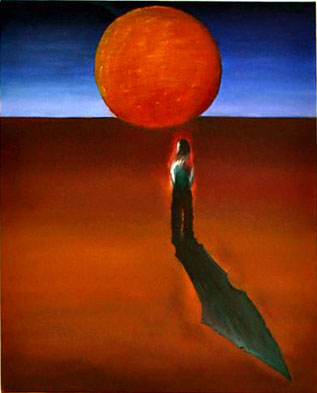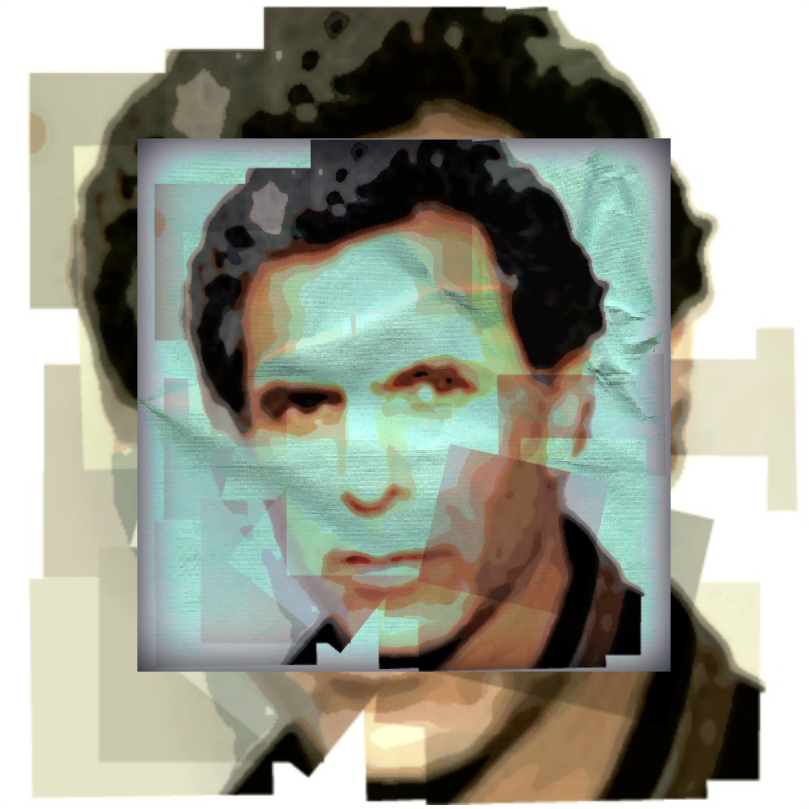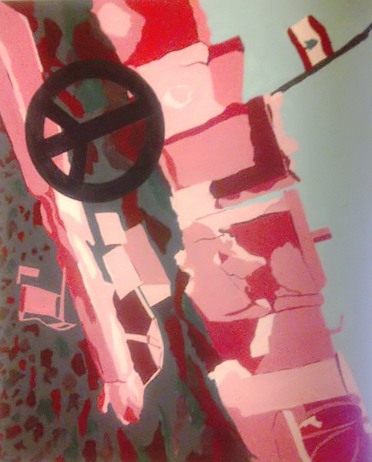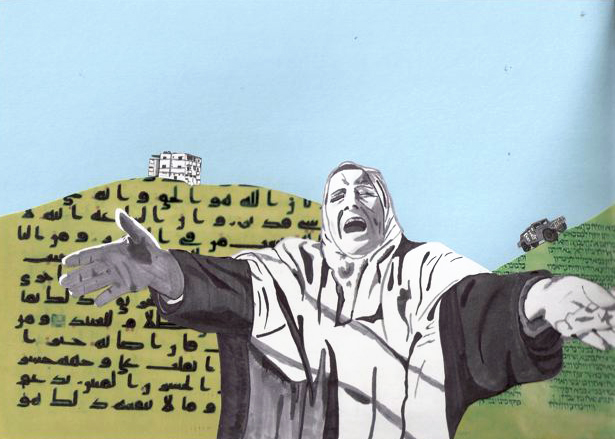
Nadia Shamout’s “Untitled.”
(Courtesy of Nadia Shamout)

The Gaza Project’s “Jule”
(Courtesy of The Gaza Project)
Correction: The original version of this caption miscredited the artist.

Joya Frangie’s “Pro-Peace”
(Courtesy of Joya Frangie
Correction: The original version of this caption miscredited the artist.
Among the emotional paintings and political photographs on the wall in the Kerckhoff Art Gallery is a single poem, inspired by the complexities and contradictions of Israel and one of the final pieces of the Art Peace exhibition.
Tikvah Heller, a fourth-year world arts and cultures student and author of the poem, said she considers it an honor to be one of the last pieces people see before they leave.
The exhibition, put together by Netta Most, a fourth-year world arts and cultures student, was conceived from Most’s growing concern over the polarities on campus pertaining to events in Palestine last year.
Most, along with Trevi Fountain, a fourth-year world arts and cultures student, and Carmel Lev, a third-year world arts and cultures student, organized the exhibition with the theme of peace between Palestinian and Israeli communities.
The exhibition opens today at 6 p.m. in Kerckhoff Art Gallery, with the aid of the UCLA Middle East Peace Coalition. Works by 20 artists will be on display through Friday.
“We really wanted to present togetherness and acceptance of the fact that there are differences, and not only being okay with that, but embracing it,” Fountain said. “(We wanted to) present people from different backgrounds that normally are not in communication and put them into communication, not necessarily with words, but through art.”
This vision would be unattainable, said Most, if not for the help of the UCLA Middle East Peace Coalition, whose goals of peace among cultures within the Middle East were aligned with Most’s goals of peace among students.
“The Middle East Peace Coalition has been great. We approached them early on, asked them to sponsor and to be part of this, and they were very excited,” Most said. “They’ve been very helpful and supportive, and it’s been a great home for this project.”
Still, Lev said that with a project so ambitious, getting started, finding artists and putting everything together was no easy task.
Lev said the group curated works that showcased artists’ individual stories, some of which came directly from the West Bank and Israel, while expressing similar themes of peace and understanding.
One of the featured artists, Gaia Cartabiano, a third-year Middle Eastern and North African studies student, said the works in the show maintain their individuality while also conforming to a larger sense of belonging.
“(The exhibition) looks very uniform, but you can tell each piece has an individual style,” Cartabiano said. “All of the pieces evoke a similar emotion or similar idea.”
Most said that while Palestinians and Israelis have different life experiences, the works of art discuss universal desires for peace, security and freedom.
Fountain said that, because she is of neither Palestinian nor Israeli descent, she felt a divide between herself and the events in Palestine. However, after working on this project, she said that she felt a greater recognition for the international issues addressed, and that she hopes that others might also strive for peace.
Heller said she hopes her poem will highlight the complexities of Israel, as well as the differences among people in general.
“Instead of allowing our differences to divide us, we need to take a moment and recognize that it is, in fact, our differences that will make us stronger than anything before,” Heller said.
